Romance novelist Ines Johnson has kindly provided us with the below guest post.
 Ines Johnson is a television writer turned romance novelist. She currently teaches college level courses in scriptwriting and story development. In her past life, she worked for such companies as National Geographic Explorer, The Discovery Channel UK, and The Black Family Channel.
Ines Johnson is a television writer turned romance novelist. She currently teaches college level courses in scriptwriting and story development. In her past life, she worked for such companies as National Geographic Explorer, The Discovery Channel UK, and The Black Family Channel.
When other authors find that out their first question is, “Can you do a book trailer for me?” Or, “Will you write a script adaptation of my book?” Her answer is always, “No, but I can teach you how to do it.” In her new course for Teachable, Book Trailers: How to Craft a Visual Ad to Sell Your Book, she’ll do that for you! You can find courses like Book Marketing: Five Steps to Market Your Book, Serialized: Using Episodic TV to Craft Your Novel, and Manuscript to Screen in her Teachable school, The Armchair Novelist.
I’m sure you’ve noticed that video is exploding on social media sites like Facebook and Twitter. Many authors are using trailers to entice new readers to buy their books or even sign up for their mailing list.
In July of this year, I got over 600 new mailing list signups in three weeks using a video trailer ad on Facebook.
Want me to show you how I did it?
It all starts with having a convincing argument. I want you to think about the last argument you had…
The Argument
Think back to a time when you were in an argument with someone. Could’ve been your parent, significant other, friend, child, merchant, or even a stranger. What was the argument about? Who eventually won the argument? Be specific. Let your description reveal details about the person’s character, personality, behavioral tendencies, interests, talents, etc. Also reveal details about the person’s physical appearance, including hair, eyes, stature, shape of face, kind and color of clothes the person wore, and so on.
Write at least 150 words.
Write in PRESENT tense.
My Example
The last argument that I got into was with my daughter. We bring home a mature cat that we rescued from a shelter. It’s the first cat we’ve adopted. The cat, being mature, is skittish. But my daughter, being young, is overly enthusiastic and affectionate. I tell her to give the cat some time and space to get to know her. She ignores this. The whole day she chases around the cat. I keep telling her to stop. The moment I turn my back, she immediately picks up the cat. The cat squirms. It’s claws, which I had yet to learn how to trim, come out. The cat scratches my daughter across the chest -right where her heart is. I shake my head, preparing to launch into an I told you so, but I can’t because she’s crying and the cat has run away to hide.
Umm, Ines? What does this have to do with a book trailer?
Patience, grasshoper. There’s a method to my madness. The steps I’m going to teach you veer slightly off the path of a book’s storyline and go more toward persuasion, because at the end of the day we to convince people to buy our books. Right?
There are three types of messages: informational, entertainment, and persuasive. Advertisements typically deal with a persuasive message.
In the argument you had, you persuaded someone or you were persuaded to do something. As a copywriter you are responsible for making up the words that motivate people to do something.
Before we go on, I want you to answer these three questions.
Question 1. What was the desired outcome of your dispute? What were you arguing about? What did you get or want to get?
In my argument, I was trying to get my daughter to give our skittish cat some space to adjust to his new life. I wanted the cat to feel comfortable before he was smothered with affection.
Question 2. What or who stood in your way?
My daughter stood in my way, but so too did the cat who was unsure about his new family, and the level of attention and affection he was receiving.
Question 3. Looking at your writing, pull out the points that support your side of the argument and list them.
The cat kept his distance.
My daughter invaded his space and got scratched.
Have you figured out what you’re fighting for? Do you have those points in front of you?
Now, let’s sketch out a plan to persuade everyone that you should’ve won this argument. You get to leave the bounds of reality for this exercise.
Remember my daughter and the cat? I’ve decided I’m going to persuade my audience to rescue more animals. To do this, I’m going to use a four step formula known as AIDA.
The A.I.D.A. Process
First, get the audience’s Attention. This can be accomplished by many means, including humor, a startling statement or visual, a rhetorical question, vivid description, a novel situation, or suspenseful conflict. Sound, such as pings, chords, or special effects, attracts attention. Keep in mind that the television viewer is prone to use the commercial break to head for a bathroom, a drink, a phone call, or food. If you don’t get a viewer’s attention in the first few seconds, before he or she leaves the area of the television set or computer screen, you’ve lost your viewer.
How will you get the audience’s Attention?
My desired outcome (Question 1) was to have our cat to be comfortable in his new home. I’m going to use a startling statement, but I’ve decided that I’m going to have the statement made by the cat! That’ll grab some attention.
Second, after you get the audience’s attention, hold its Interest. One effective technique is constructing the mini-drama, establishing a conflict that keeps the audience viewing or listening for the climax or resolution. Anecdotes, testimonials, statistics, examples and exciting visuals and sound are among the devices that can be used to hold interest.
How will you hold their Interest?
Remember, that in my dispute my daughter stood in the way of my cat finding comfort (Question 2). I’m going to establish a conflict of interest, using satire, that the cat didn’t actually want to be rescued.
Third, arouse the Desire of the consumer. You must first understand how the target consumers think, behave, and make decisions, and then give them a reason to buy.
What would motivate someone to do what you are requesting?
Play to their desires using the points that supported your side of the argument (Question 3). I want to motive people to go and rescue more animals. I’ll be playing on their emotions of family and abandonment and not belonging. As part of my ad, I’m going to show the cat living in the lap of luxury while looking outside at stray cats. But my cat will lament over that old life while a little girl dresses him up in silly cat outfit that has frills.
Fourth, motivate the consumer toward Action by telling them what to do next. For example, “Go buy my book!”
Now tell them what to do next in order to get what you’re “selling.”
Make them Act. At the end of my ad, my cat will sarcastically ask to be rescued. This will be an for the SPCA. So, I’ll have text on the screen that reads “Rescue a Pet.”
Don’t worry if you get stumped. This is just a creative exercise to get your mind set in the creative copyediting space. You may already see how you can translate these persuasive techniques to your books.
Once you’ve got got the four steps of AIDA ready, you can start to storyboard your idea.
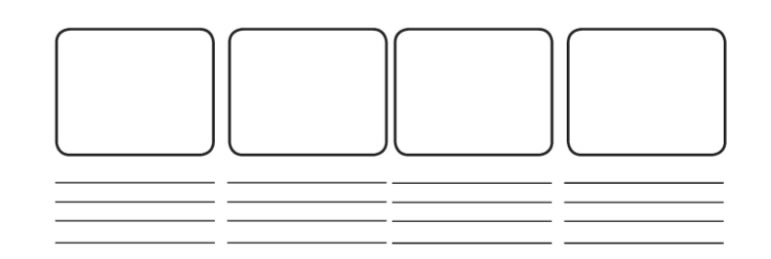
A storyboard is a graphic depiction of what the audience will see and hear on the screen, using a series of panels much like a cartoon strip.
Most commercials are 30 – 60 seconds long. The rule of thumb in the media world is to use one frame for every five seconds of ad time. So plan to use 6-12 frames of the storyboard.
Now, if you’ve looked at book trailers on Facebook or Youtube, you will know they are often much, much, much longer than a minute. I fundamentally do not agree with this length of time. People have notoriously short attention spans. When we finish with this exercise and get to your trailer, you are welcome to make it minutes long. But I would advise against it.
You can go into Word or Google Docs and use the column feature to make your own storyboard script. Here is my example for my persuasive ad featuring my cat. You are free to use any images you find on Google for this exercise as we are not broadcasting it.
Please note that VIDEO or images go on the left and AUDIO or dialogue goes on the right.
| VIDEO | AUDIO |
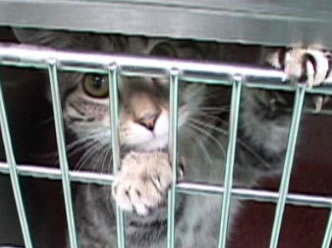 |
Cat: Life wasn’t always like this. |
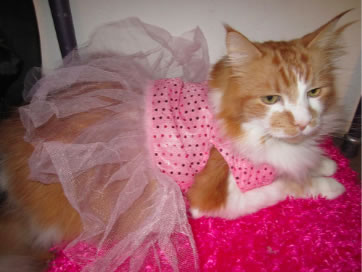 |
Cat: It used to be hard. |
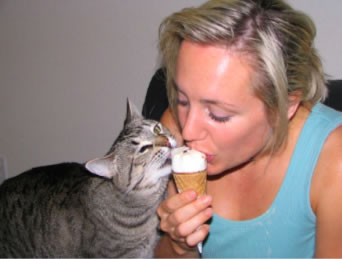 |
Cat: I used to have to fight for scraps |
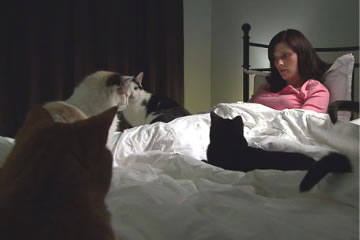 |
Cat: It was hard to find a warm bed to sleep in. |
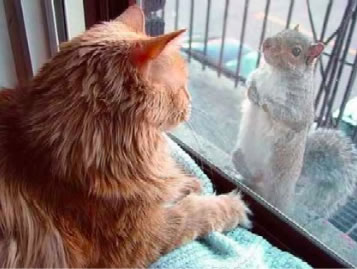 |
Cat: But it could be worse. |
 |
Cat: I should’ve stayed put. |
 |
Cat: Please save me! |
 |
That’s how you take an argument and turn it into a persuasive advertisement! Now you could simply create a book trailer that introduces your main character and tells the plot of your book. But in my opinion, and experience, that’s what readers who are already fans want to see.
In my opinion, readers who don’t know how amazing your books are already need to be persuaded to pick them. You want to motivate them to buy your book. To do that they need to list and organize the reasons why they should. Make an argument!
I hope this exercise was fun and got your creative juices flowing. If you’d like help turning AIDA onto your very own book trailer, please consider enrolling in the full Book Trailers course.
In the course you’ll learn,
- The Five Types of Ads,
- See examples of AIDA in action in other book trailers,
- Get feedback on your script from me,
- Watch step by step video lectures on how to translate your script into a video ad using a free editing software, and
- How to upload that video to Youtube, Facebook, Twitter, and your own website.
If you’re ready to take your text to the screen, enroll in Book Trailers today!

